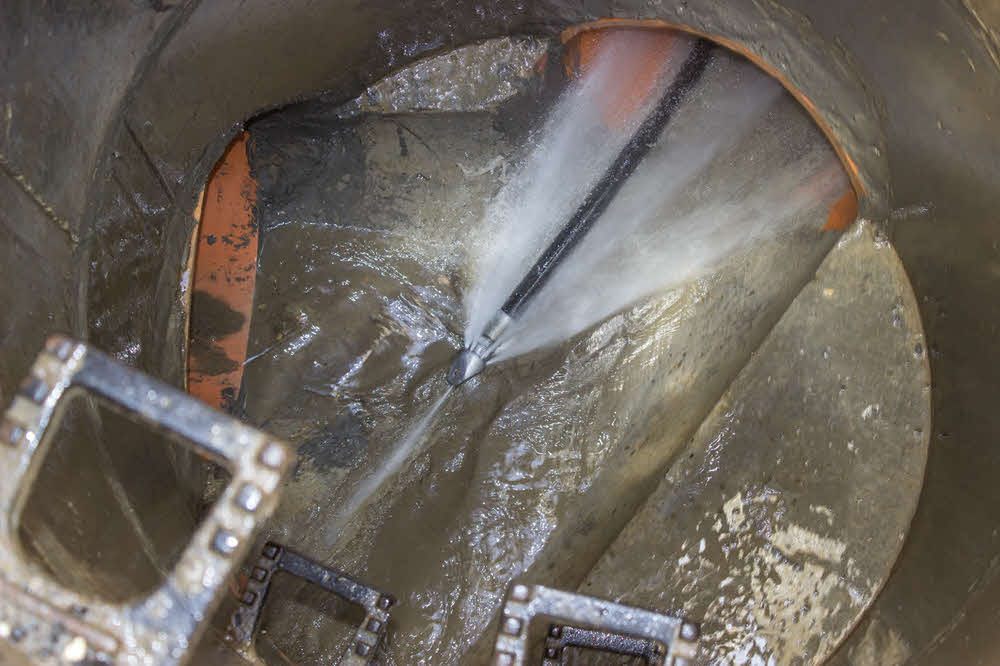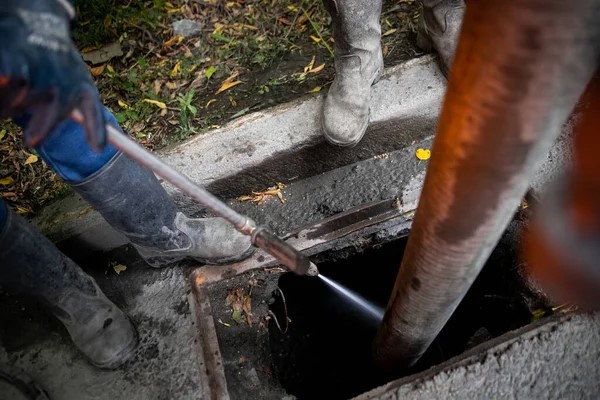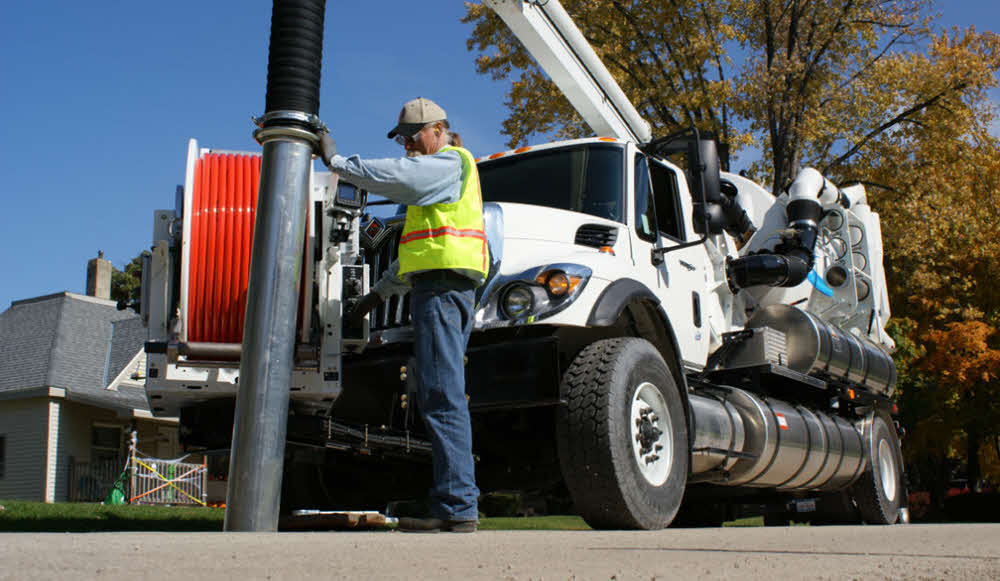Sewer Clean Out Servicesin Marine City MI
Sewer Clean Outs to Keep Your Plumbing Running Smoothly
We Are Locally Owned & Operated For Over 37 Years
Contact Us Today!
We Serve Businesses In And Around The Following Cities:
About Sewer Clean Out Services
Sewer Clean Out: An Essential Practice for Marine City Commercial Properties
In the fast-paced environment of commercial properties in Marine City, smooth operations are critical. Among many crucial aspects, the maintenance of the sewer system can significantly impact a property’s operations. One often overlooked, yet vital part of keeping your property up to snuff lies in sewer clean out.
An efficient sewer system is the backbone of any well-maintained property, and a proper sewer clean out can alleviate many plumbing woes. It’s critical to partner with a reliable service provider, such as D&J Contracting, who can efficiently fix sewer line issues and guarantee your property’s health and functionality.
What Does a Sewer Clean Out Involve?
The process of providing a thorough sewer clean out includes minor to major actions, from clearing a sewer drain blockage to entirely replacing a sewer line. For an average commercial property in Marine City, the sewer line from the house to the street can sometimes be clogged by debris, necessitating a sewer line repair.
If a sewer drain clog gets serious, it might lead to main sewer line issues or even a collapsed sewer line. In such cases, the property owner may face a significant price to replace the sewer line. Using techniques such as hydro jetting, a sewer line, especially a main sewer line in a basement, can be cleaned out, reducing the sewer line replacement cost.
Though the cost to fix a sewer line can seem steep, considering the potential business loss due to blocked plumbing lines, it is advisable to handle it proactively. Moreover, a professional outfit like D&J Contracting can assess the situation and advise the best course of action, be it a simple sewer pipe clogged fix, trenchless sewer line replacement, or opting for a new sewer line installation.
Importance and Benefits of Regular Sewer Clean Out
Regular maintenance and clean outs can detect potential issues in advance, reduce the likelihood of sewer drain blockage, and keep your sewer system in top shape. Keeping the main sewer line clear can prevent serious complications like collapsed sewer lines and reduce potential repair or replacement costs.
When maintenance is regular and thorough, the chances of an unexpected sewer line repair near you are greatly reduced. Techniques such as jetting a sewer line can help maintain the sanitation standards expected of Marine City’s commercial properties, maintaining a pleasant and healthy environment.
Clean sewer lines near your property can ensure the efficient operation of your drainage system, adding value to your property and your business. Contrarily, a neglected sewer line can cause bad odors, backups, and even health hazards. Therefore, considering the average cost of replacing a sewer line, regular maintenance and potential sewer line repair costs become a worthwhile investment.
Remember, it’s not just about ensuring a smoothly running sewer pipe. It’s about creating a safe, efficient environment for the people in your property. Through regular thorough sewer clean out sessions with D&J Contracting, business owners can focus more on their core operations instead of worrying about plumbing issues.
Choosing the Right Service Provider for Sewer Line Services
When it comes to maintaining the sewer lines near you, it’s paramount to choose the right provider who understands the specific needs of Marine City establishments. Understanding the localized requirements, such as the codes, regulations, and common issues that come with sewer line installation in Marine City’s commercial properties, can make a significant difference in service quality.
D&J Contracting, familiar with Marine City, will not only address current issues but anticipate and prevent future ones too. Their experienced team can accurately estimate the sewer line replacement cost, help with replacing sewer lines from the house to the main to lower cost, or handle any other requirements based on your needs and budget.
Hence, whether you’re dealing with a straightforward sewer drain clog or contemplating a complete sewer line replacement near you, an expert partner like D&J Contracting can make the process less daunting and more cost-effective.
Investing in Your Property’s Future Through Sewer Clean Outs
In the context of commercial properties, planning for the future is a must. When it comes to averting serious damage, however, prevention is always better—and often less fraught—than a cure. Investing in regular sewer clean outs and maintenance with professionals like D&J Contracting can safeguard your future and help your property continue to thrive.
Keep in mind that the cost of cleaning or replacing a sewer line is only a fraction compared to the business loss if the main sewer line fails. Make the wise, proactive decision to give your commercial property the maintenance it deserves. After all, the health of your property is directly tied to the health of your business.
In conclusion, the regular sewer clean out process, while often overlooked, can offer numerous benefits to commercial properties in Marine City. Not only can it save substantial repair costs in the long term, but it can also positively impact the smooth operations of your establishment, ensuring continuous revenue generation. So, take the next step and have a comprehensive sewer clean out for your commercial property today with D&J Contracting.
Sewer Clean Out Services Gallery


Call Us Today to receive your Free Quote for
Sewer Clean Out in Marine City
Serving: Marine City, Michigan

About Marine City, Michigan
The area of Marine City had been Ojibwa territory for centuries before the first European contact. Beginning in the 17th century, French trappers and missionaries entered the territory, followed by settlers in the colonial period on both sides of the Detroit and St. Clair rivers. Farmers developed long, narrow plots that were laid out in the typical rectangular shape of colonial French, with the narrow end along the riverfront. The first Catholic Church was built by French Catholics at Catholic Point, where they had bought land before the United States was formed. French Canadians also lived on the other side of the river in a small farming community known as Petite Côte.
It was not until after the American Revolution that European-American settlers arrived in any number. In the 1780s they obtained a deed for land from the Chippewa Indians. The Americans began to call the community “Yankee Point”, because so many settlers came from the Northern Tier of states, with late 18th and 19th-century westward migration originating from New England and New York. They also called the settlement “Belle River” (Belle Riviere in French), as the French had; this later was applied as the name of a neighborhood.
The village was platted by Americans as Newport in 1835–37. Although never incorporated by that name, it was known as “Newport” for 31 years. In 1865, it was incorporated as the Village of Marine City. Thriving on lumber trade and shipbuilding, the village re-incorporated as a city in June 1887.
The second half of the 19th century was the period of great growth in the village, with many workers employed in the lumber and shipping industries. Rafts of lumber were moved down the St. Clair River in the spring to be worked at Marine City or Detroit. Shipyards built some of the many wooden ships that crossed the Great Lakes. Lake steamers linked passengers with small towns around the lakes. Their decks were full and their flags were flying. Marine City was centered on a park by the St. Clair River, where bands played in the bandstand at City Hall during the summer.
As the lumber business ran down with the exploitation of forests, the area became linked to other resource extraction. Freighters carried iron from Duluth, Minnesota, which had been mined in the Mesabi Range, to Ashtabula, Ohio for steel processing. They passed from Lake Superior through Lake Huron and to Lake Erie. Marine City was known as the town on the St. Clair River where the captains of lake freighters lived. Many of these men and their crews worked for the Pittsburgh Steamship Company. Formed in 1901 by US Steel Corporation, it became the largest commercial fleet on the Great Lakes.
In the 21st century, Marine City has become the home of ten antique stores. The Snug Theater is a 98-seat theater featuring live performances. It will be joined in 2014/15 by a sister theater, The Riverbank Theater, in a former bank building (originally Marine Bank & Trust) down the street. Also joining the two acting theaters is the old Mariner Theatre, which serves as a special event center, movie theater, gallery for fine art Models, and site of the builders model for the ocean-going Titanic. Restaurants and retail in downtown also cater to visitors and residents.
The Heather House, now operated as a bed and breakfast, was built in the Queen Anne Victorian-style. It was completed in 1885 after 2 years of construction for its owner, William Sauber. He was chief engineer for the Mitchell fleet of Great Lake steamers.
- According to the United States Census Bureau, the city has a total area of 2.46 square miles (6.37 km), of which 2.15 square miles (5.57 km) is land and 0.31 square miles (0.80 km) is water.
- It is considered to be part of the Thumb of Michigan, which in turn is a subregion of the Flint/Tri-Cities.
- Marine City can also be considered as in the Blue Water Area, a subregion of the Thumb.
- It is part of the Detroit-Warren-Livonia Metropolitan Statistical Area (MSA) and the Detroit-Ann Arbor-Flint Combined Statistical Area (CSA).
| Census | Pop. | Note | %± |
|---|---|---|---|
| 1870 | 1,240 | — | |
| 1880 | 1,673 | 34.9% | |
| 1890 | 3,268 | 95.3% | |
| 1900 | 3,829 | 17.2% | |
| 1910 | 3,770 | −1.5% | |
| 1920 | 3,731 | −1.0% | |
| 1930 | 3,462 | −7.2% | |
| 1940 | 3,633 | 4.9% | |
| 1950 | 4,270 | 17.5% | |
| 1960 | 4,404 | 3.1% | |
| 1970 | 4,567 | 3.7% | |
| 1980 | 4,414 | −3.4% | |
| 1990 | 4,556 | 3.2% | |
| 2000 | 4,652 | 2.1% | |
| 2010 | 4,248 | −8.7% | |
| 2020 | 4,079 | −4.0% | |
| U.S. Decennial Census | |||
As of the census of 2010, there were 4,248 people, 1,765 households, and 1,117 families residing in the city. The population density was 1,975.8 inhabitants per square mile (762.9/km). There were 2,015 housing units at an average density of 937.2 per square mile (361.9/km). The racial makeup of the city was 96.8% White, 0.3% African American, 0.7% Native American, 0.2% Asian, 0.5% from other races, and 1.6% from two or more races. Hispanic or Latino of any race were 1.7% of the population.
There were 1,765 households, of which 31.1% had children under the age of 18 living with them, 44.6% were married couples living together, 13.3% had a female householder with no husband present, 5.4% had a male householder with no wife present, and 36.7% were non-families. 31.3% of all households were made up of individuals, and 14% had someone living alone who was 65 years of age or older. The average household size was 2.41 and the average family size was 3.00.
The median age in the city was 40.2 years. 22.9% of residents were under the age of 18; 8.2% were between the ages of 18 and 24; 25.8% were from 25 to 44; 27.9% were from 45 to 64; and 15.3% were 65 years of age or older. The gender makeup of the city was 48.2% male and 51.8% female.
As of the census of 2000, there were 4,652 people, 1,860 households, and 1,212 families residing in the city. The population density was 2,120.8 inhabitants per square mile (818.8/km). There were 2,006 housing units at an average density of 914.5 per square mile (353.1/km). The racial makeup of the city was 97.29% White, 0.09% African American, 0.56% Native American, 0.26% Asian, 0.86% from other races, and 0.95% from two or more races. Hispanic or Latino of any race were 1.38% of the population.
There were 1,860 households, out of which 33.5% had children under the age of 18 living with them, 48.2% were married couples living together, 12.7% had a female householder with no husband present, and 34.8% were non-families. 30.8% of all households were made up of individuals, and 14.4% had someone living alone who was 65 years of age or older. The average household size was 2.50 and the average family size was 3.15.
In the city, the population was spread out, with 27.6% under the age of 18, 8.2% from 18 to 24, 30.5% from 25 to 44, 19.4% from 45 to 64, and 14.2% who were 65 years of age or older. The median age was 36 years. For every 100 females, there were 90.4 males. For every 100 females age 18 and over, there were 88.6 males.
The median income for a household in the city was $40,146, and the median income for a family was $47,308. Males had a median income of $39,228 versus $23,677 for females. The per capita income for the city was $19,722. About 7.6% of families and 8.9% of the population were below the poverty line, including 9.0% of those under age 18 and 16.1% of those age 65 or over.
Call Us Today to receive your Free Quote for
Sewer Clean Out in Marine City
Related Services in Marine City, Michigan
We Serve Businesses In The Following Zip Codes:
48007, 48015, 48021, 48026, 48035, 48036, 48038, 48042, 48043, 48044, 48045, 48046, 48047, 48048, 48050, 48051, 48066, 48071, 48080, 48081, 48082, 48083, 48084, 48085, 48088, 48089, 48090, 48091, 48092, 48093, 48098, 48099, 48225, 48230, 48236, 48310, 48311, 48312, 48313, 48314, 48315, 48316, 48317, 48318, 48397